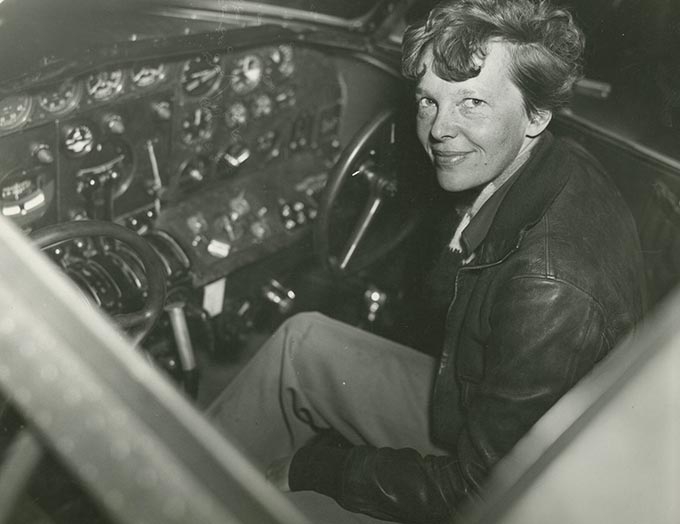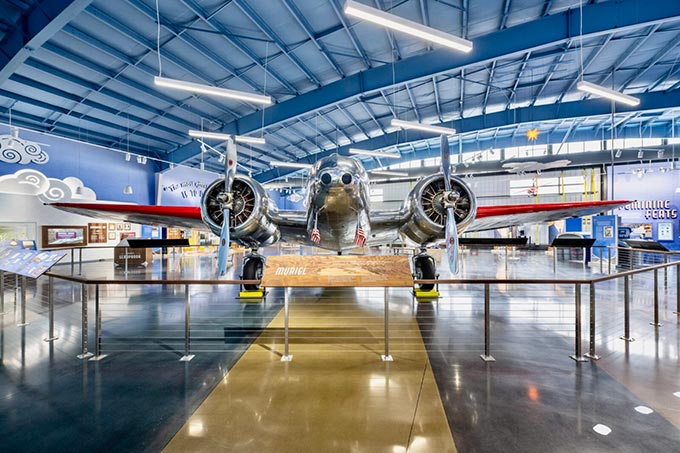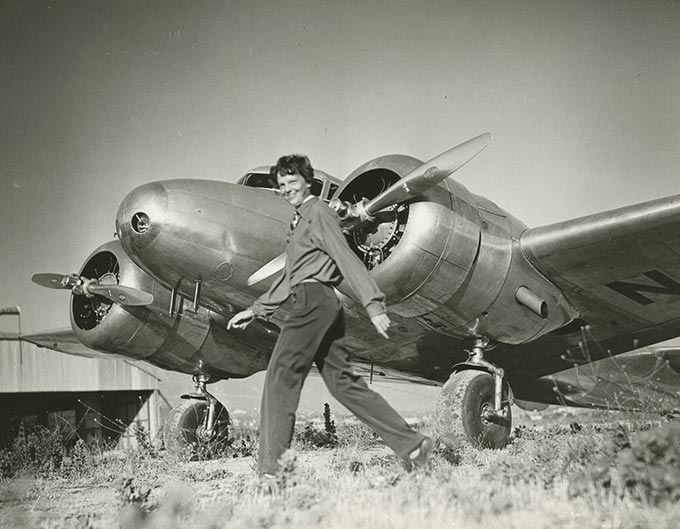
A tribute to the fearless spirit of a defining American figure, the new Amelia Earhart Hangar Museum touches down in Atchison, Kansas.
Written by Jenn Thornton
Sharing native Midwestern roots and highflying careers—not to mention separate airports named in their respective honor—John Wayne and Amelia Earhart are exemplars of American possibility and independence, each having soared to stratospheric heights of fame and achievement, Wayne in Hollywood, and Earhart with her head proudly, and literally, in the clouds. By the time Wayne sat in the fictional cockpit for the films Flying Tigers (1942), Flying Leathernecks (1951), Island in the Sky (1953), Wings of Eagles (1957) and Jet Pilot (1957), Earhart had taken the skies by storm as the first woman to fly solo across the United States and the Atlantic Ocean, and whose plane tragically disappeared on July 2, 1937, near Howland Island in the Pacific, as she endeavored to fly around the world. History has remembered her name.

Today that name is being celebrated anew at the Amelia Earhart Hangar Museum. Located in Earhart’s birthplace of Atchison, Kansas, where it is based at the Amelia Earhart Memorial Airport, the new Museum marks its grand opening on April 14, 2023. Blending interactive STEM exhibits and historical storytelling, this porthole into all-things Earhart explores not only the record-setting exploits of the world-renowned aviatrix to which it is dedicated, but also reveals the fullness of Earhart herself, a quintessential American innovator who broke the rules, defied the odds, and lived life on her own terms. For this, her legacy continues to inspire admirers across the world.
“Amelia Earhart’s legendary feats are the very emblem of courage—and of a woman who refused to let fears and adversity ground her dreams,” says Karen Seaberg, founder and president of the Amelia Earhart Hangar Museum. The lady, in other words, had grit. In the face of obstacles—financial, social and scientific—she “boldly defied the gender norms of her time and used her success to encourage others, particularly women and girls, to pursue the many possibilities for their lives.”
For Earhart, the possibilities were endless. “Many people don’t realize that Amelia Earhart was more than a pilot,” says Seaberg. “She worked hard in many jobs to help finance her passion for flight.” One of the goals of the Museum, therefore, is to encourage younger generations to consider their own career opportunities through the lens of Amelia’s life via the latest technologies that allow them to be an avatar of sorts whereby they can “‘try on’ Amelia’s career paths as a nurse, pilot, mechanic—and even a fashion designer.” Also on the flight deck: Muriel—the world’s last remaining Lockheed Electra 10-E. Christened after Earhart’s younger sister Grace Muriel Earhart Morrissey, this gleaming piece of aircraft is identical to the plane that Earhart flew on her final flight around the world.
“Her mysterious disappearance on her flight around the world has reached mythic levels,” Seaberg concedes, “yet Amelia did not leave a tragic legacy. Instead, her life story is one of daring, bravery and perseverance. The new Amelia Earhart Hangar Museum is dedicated to exemplifying Amelia’s courageous spirit that continues to dare us all to dream bigger dreams.”

Photographs courtesy of Amelia Earhart Hangar Museum except where noted


